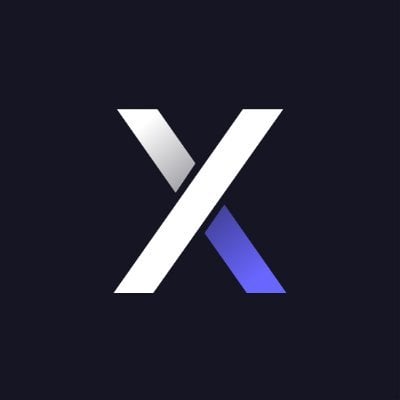The Innovator's Dilemma of Ethereum: With valuations and use cases at their peak, where will the unmotivated ecosystem go?
Original Title: Ethereum and the innovator's dilemma
Original Author: JAY
Original Translation: 深潮 TechFlow
What does the future hold for Ethereum?
In this article, I will explore modular blockchains, database design, and reference GCR's perspective to answer this question.
Disclosure: I am currently long on Ethereum.
The argument behind the innovator's dilemma can be summarized as:
"Successful companies often fail to adapt to paradigm shifts, especially in terms of technological innovation. The reason is that they focus and over-allocate resources to aspects that make their products successful, rather than trying novel and unfamiliar ideas."

In the world of blockchains and smart contracts, we have made significant progress over the past few years. Now, the question we face is: what will be the fate of Ethereum?
Through this article, I will argue that Ethereum has reached a peak in both 1) valuation relative to all crypto assets and 2) relative usage and adoption.
I will start by exploring the concept of modular blockchains, comparing it to traditional database design principles, and then connect all of this to Ethereum and its future.
Modular Blockchain
Now, we have a more principled way to think about the factors that constitute a well-functioning blockchain and a logical approach to decoupling (and scaling) core components. This is about the debate between monolithic and modular.
The core idea of blockchain modularity is that there are four fundamental functions:
Execution
Determining the state after a transaction. If I send tokens to a given wallet, the execution layer decides the relevant balances before and after the transaction.
Settlement
Determining whether the submitted transaction is "valid." After sending tokens, the balance is xyz------settlement determines whether xyz is correct.
Consensus
Determining the final state after a series of transactions. This layer determines 1) what the correct order of a given series of transactions is, and 2) what the final state is after processing these transactions.
Data Availability
For any of the above functions to exist, there needs to be a prior state and an ending state. The function of DA is to provide the execution layer with the state and update the state based on the finality of consensus.

Like any engineering problem, the concept of a "perfect" blockchain only makes sense when there is a clearly defined use case. The existence of this framework allows for more specialized blockchain designs—blockchains built for high-throughput games will have very different requirements than those intended to be global, decentralized ledgers.
This way of thinking reminds me of the principles of database design, particularly the debate around SQL versus NoSQL.
Database Design
Databases have existed for decades longer than blockchains. When it comes to their design, the first reaction is that there is no perfect database. Like most engineering problems, it all comes down to trade-offs.
The framework for building scalable databases goes back to "what is the use case?" Some questions I would ask before making decisions include:
What is the rough ratio of reads to writes? In applications like Telegram or Slack, the scale of reads and writes is similar, while on Twitter, the scale of reads will far exceed writes;
In distributed systems, there is the concept of consistency versus availability. In other words, this can be rephrased as: are we more concerned about data inaccuracies or application downtime? It depends on the specific situation. For fintech applications, consistency (accurate data) is more important;
How important is stale data versus fresh data? How does this relate to read/write loads? Does our database allow us to implement a strategy to handle concurrent writes and reads? For example, if my wife withdraws cash from the bank just as I swipe my debit card—how do we prevent the classic double-spending problem?
What do the read patterns look like? Do you need flexibility to access data, or is it usually predefined? Do you need to perform a lot of joins between different datasets?
Even beyond technical considerations, it is important to ask:
How many engineers are proficient in this technology? How many engineers really want to build with this technology?
If we want to fork the underlying code and make adjustments, is there a way to gain positive support?
The Future of Ethereum
Now let’s connect all of this—there is no perfect blockchain. Good engineering is about trade-offs, and there is no one-size-fits-all solution. So how did Ethereum become such a "dominant" platform? Why does Ethereum's price suggest it is the perfect blockchain? Ultimately, where is Ethereum headed?
How did Ethereum become such a "dominant" platform?
Four years ago, Ethereum was the go-to platform for building smart contracts. It had excellent developer tools (relative to all other platforms), such as Hardhat, CryptoZombies, etc. Additionally, it had a focused user base, and the chain and tokens were "decentralized." At that time, centralized blockchains were more likely to be scams. The ETH asset was also much cheaper, which meant gas fees were too.

Fast forward to today, developers have more smart contract platforms to choose from, each with unique trade-offs. While fraud still exists, it has significantly decreased compared to four years ago, as more talent and capital have entered the space.
The reasons for Ethereum's past success are also the reasons for its potential future failure. There was a time when Ethereum was the only viable smart contract platform for developers. Legitimate use cases (DeFi, NFTs) gave ETH a significant lead. But at this stage, the focus has shifted to value accumulation and competing with Bitcoin to become the internet-native store of value (beyond just surpassing).
The desire to be the "largest currency" for smart contracts and decentralization has created significant friction for marginal users and developers (higher gas costs, congested networks). As Confucius (and GCR) said: "He who chases two rabbits catches neither."

Where is Ethereum headed?
Users will go where applications exist and costs are reasonable. However, application developers often consider and focus on these issues more long-term, as developers have more overhead compared to users themselves. Developers will build on platforms where their applications have the potential for long-term growth and scalability.
Now looking at Ethereum—it processes an average of 15 to 20 transactions per second, and gas fees for transactions often soar to $200. There are very clear limitations on the applications that can be built on Ethereum, which require very little interaction. For example, lending protocols are a good application on Ethereum because I might only interact with it a few times a year.
But if I am an application developer looking to build something that intends to scale to 100,000 or 1 million users with a higher usage pattern, it is not feasible to build such an application on Ethereum.
This has become even more apparent as viable alternatives continue to emerge.
FriendTech is built on Base L2;
The Pacman and Blur teams are considering launching their own L2;
DYDX uses their own specific application chain.
The modular blockchain framework offers a set of trade-offs to choose from. We are now at a point where blockchain infrastructure supporting trade-offs at various points on the curve is beginning to emerge.
Finally, it’s about incentives, incentives, incentives.
As Munger has always said, "Show me the incentives, and I will show you the results." Compared to other existing blockchains, Ethereum has a poorer incentive structure. Venture capital firms and new L1 teams are interested in building a strong and thriving ecosystem. As an investor, I would wonder why I would want my team to build on Ethereum when the tokens are so dispersed and the ecosystem is already so crowded? Why not promote application development on a blockchain where I have a vested interest, where the L1 valuations are much lower?

Ethereum is no longer operating at the effective frontier of blockchain design. No matter where you want to be on the trade-off curve, there are better smart contract platform options, and the incentive structure is set against them. Unless there is a fundamental change in how Ethereum operates as a community and an organization, its dominance in terms of valuation and usage has peaked.













